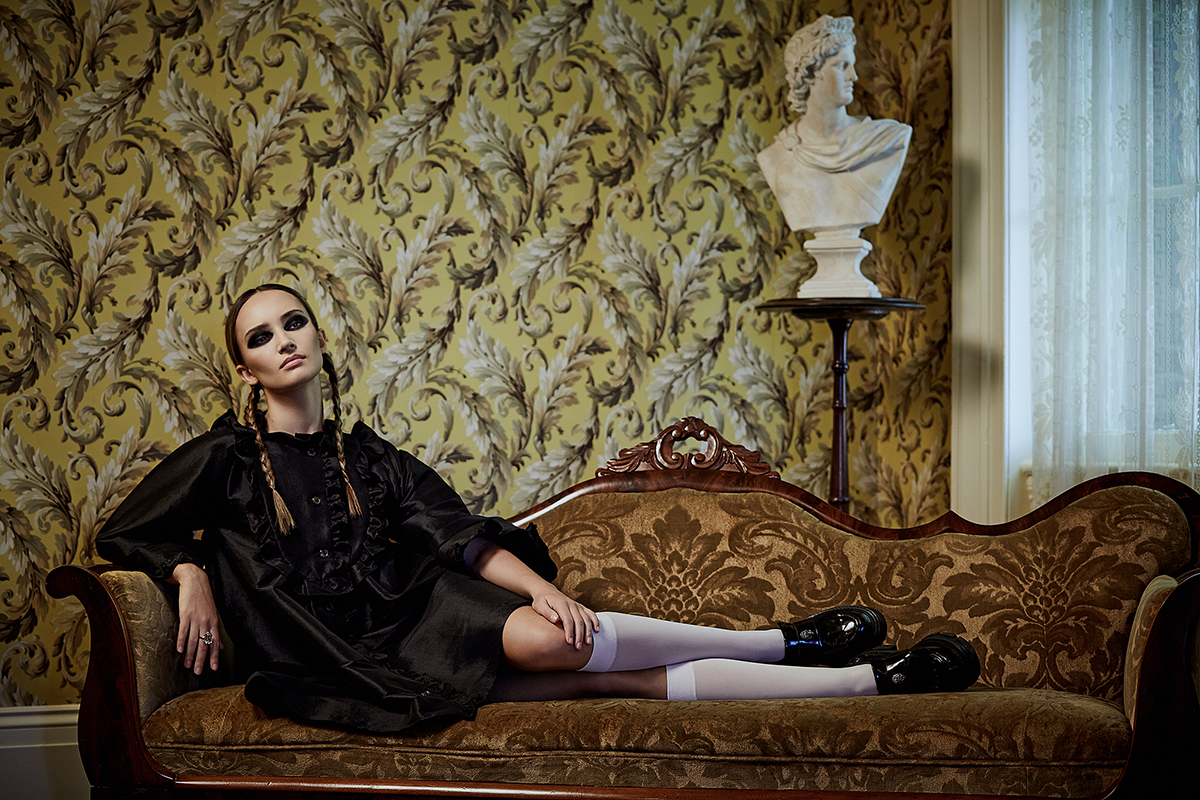The Art of Fashion & Commercial Photography
Orlando Behar zooms in on his immaculately attired models with the Tamron SP 70-200mm VC G2 lens.
Share the article:
More Photo Tips | Video Gallery | Photo Gallery | Enewsletter sign-up
By Jenn Gidman
Images by Orlando Behar
Ever since he took an editorial fashion photography class while studying advertising in college, Orlando Behar had enjoyed taking pictures. But it wasn’t until a few years after graduation when he realized photography could become a viable career. “I’d met up socially with a friend who was a fellow swing dancer, and he mentioned he needed an assistant around the studio,” Orlando says. “I was in between jobs, so I agreed.”
Two decades later, after stints in New York and Miami, Orlando is now a professional photographer based in Little Rock, Arkansas, with commercial photography work that’s appeared in the likes of Elle, the New York Times Magazine, and InStyle, among others. “I love fashion photography, because not only do I get to explore the lighting and posing aspect of this form of photography, but the fashion on its own is art,” he says.
One crucial tool in Orlando’s arsenal: his Tamron SP 70-200mm F/2.8 Di VC USD G2 telephoto lens. “I’ve long been a prime lens shooter, but anywhere from 70mm to 135mm is my sweet spot for portraits, so the 70-200mm intrigued me,” he says. “In addition to the versatility it offers, this lens is ridiculously sharp, and the Vibration Compensation (VC) feature is amazing. I’m often in unstable situations, like shooting from a dock on a windy day, and I have the utmost confidence in shooting with this lens handheld. I also tend to shoot on the wide-open end, so having that F2.8 maximum aperture is key.”
ORLANDO’S QUICK TIPS FOR COMMERCIAL PHOTOGRAPHY
Be specific with your narrative.
You can’t just tell your model for editorial fashion photography to “stand there and look cool.” They likely won’t know what you mean. Instead, I rely on classic movie archetypes that everyone can relate to. If you ask your model to do something that feels foreign to them, their poses will seem stiff and staged. But if you say, “Imagine we’re on a road trip right now, with the wind blowing through your hair” or “You’re sitting in a field waiting for a friend,” everyone gets that.
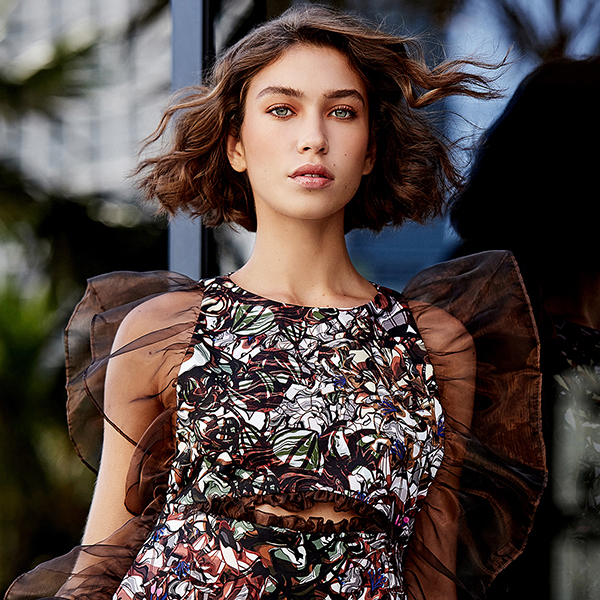
70-200mm (111mm), F3.2, 1/640 sec., ISO 320
Click image to view larger
I also provide a lot of direction, because I need to ensure the vision I have for each project. I’ll ask a model to place their hand in their pocket if I think it looks natural, or to gaze off in a certain direction to get them going. They’ll usually start relaxing after that initial direction and improvise some moves on their own, but still within the parameters I’ve established.
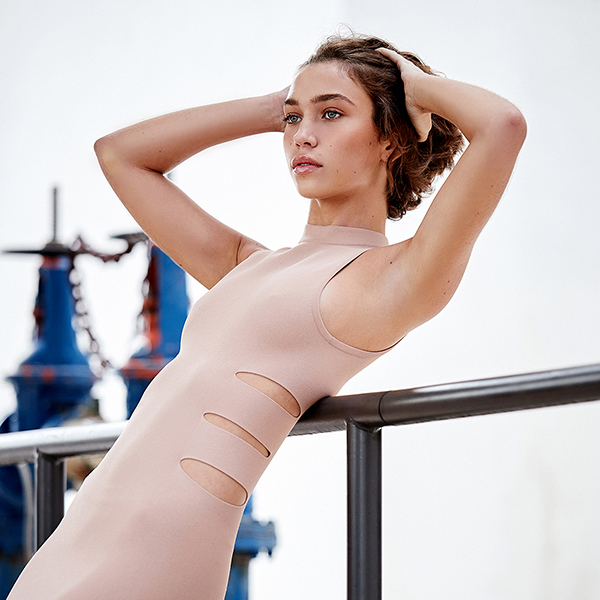
70-200mm (149mm), F2.8, 1/320 sec., ISO 320
Click image to view larger
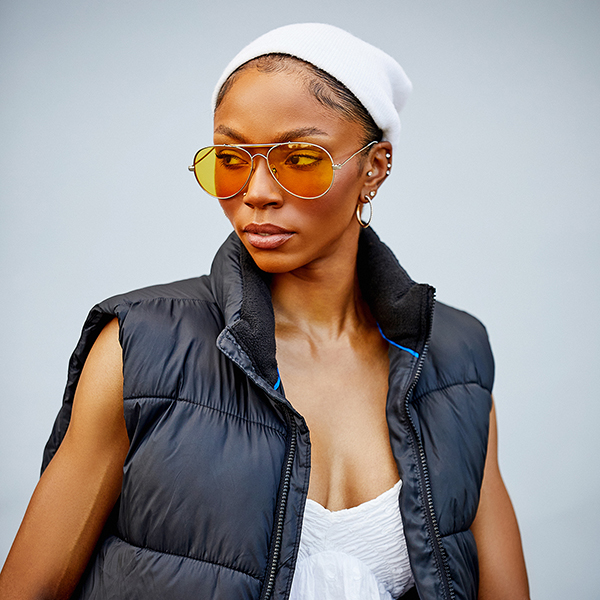
70-200mm (163mm), F3.2, 1/800 sec., ISO 400
Click image to view larger
Don’t shy away from the “hero” pose.
You don’t always have to shoot from a higher angle with female models. I prefer to position myself slightly below the model's eye line, which creates a powerful perspective. When I’m shooting from this position for commercial photography, I’ll often instruct the model to tilt their head down slightly to achieve the effect I’m going for.
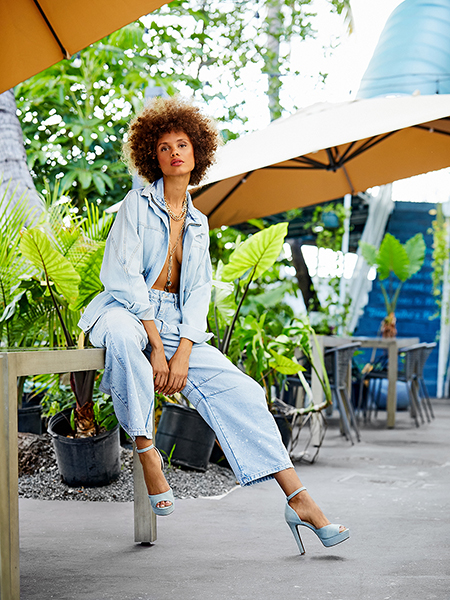
70-200mm (70mm), F3.2, 1/250 sec., ISO 400
Click image to view larger
Acquire a posing stool for editorial fashion photography.
It allows you to place the model a little higher up, and it also gives them a place for their hands (they can place them on the stool seat) and their feet (they can lock their heels into the stool bars). I used a stool for the photo of Rivers, the model with the long, flowing hair. I wanted a dreamy, end-of-day vibe here, almost like a ‘70s album cover.
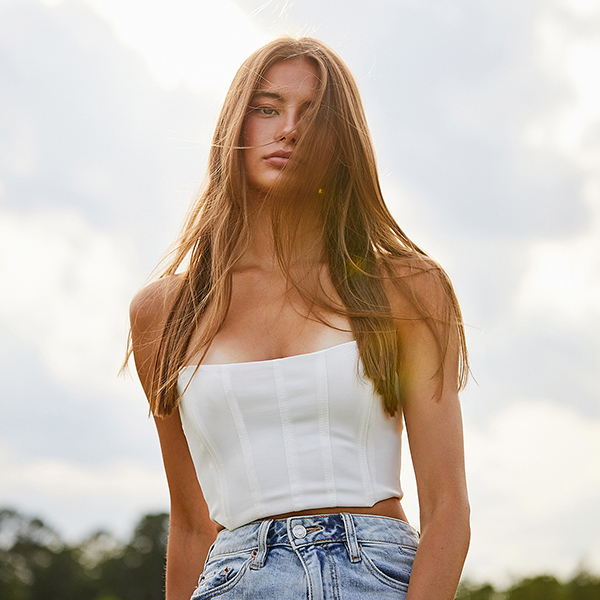
70-200mm (74mm), F3.2, 1/2000 sec., ISO 320
Click image to view larger
Offer clients something unique.
I’ve photographed Grey, the model you see sitting on the table outside a Miami hostel, multiple times. One day, I was set to do an editorial shoot with her, and she reached out to let me know her sister Gemmy, who’s also a model, was in town. Grey let it slip that they’d never had a photo taken together since they became models. She suggested I take their photo together, and that idea resonated with me, so I took their portrait. What’s funny is that I recognized her sister as someone I’d photographed in New York City back in 2010. Listen to your clients and their stories and go the extra mile.
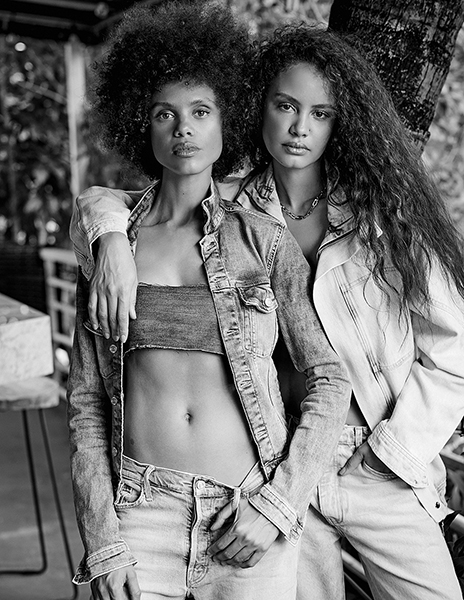
70-200mm (80mm), F4, 1/125 sec., ISO 400
Click image to view larger
Work in team settings.
Collaborating with a team can greatly enhance your work. Seek assistance with hair, makeup, and in selecting appropriate clothing for your subjects. This support allows your vision to come to life while receiving valuable real-time feedback. This type of teamwork is the key to success, and it helps your work continually evolve and flourish.
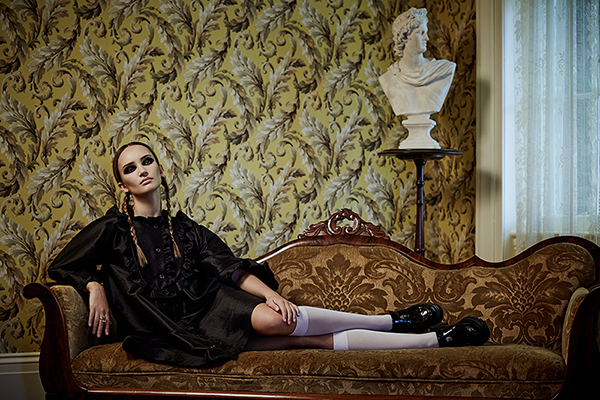
70-200mm (83mm), F2.8, 1/30 sec., ISO 400
Click image to view larger
Practice, practice, practice.
It bears repeating. This is the only way you’ll determine what your style of commercial photography is. Take pictures of your friends, family, and anyone willing to have their photo taken. Photograph them at all different times of the day, and with the sun in different places. As you become comfortable shooting in various lighting situations, you'll start to develop style hallmarks and preferences.
To see more of Orlando Behar’s work, check out his website and Instagram.
Is your Tamron News subscription up to date? Click to subscribe to all editions of Tamron News featuring how-to tips, new product news, contest announcements and inspiration!
More Photo Tips | Watch Videos | Learn More About Tamron Lenses | Photo Gallery
